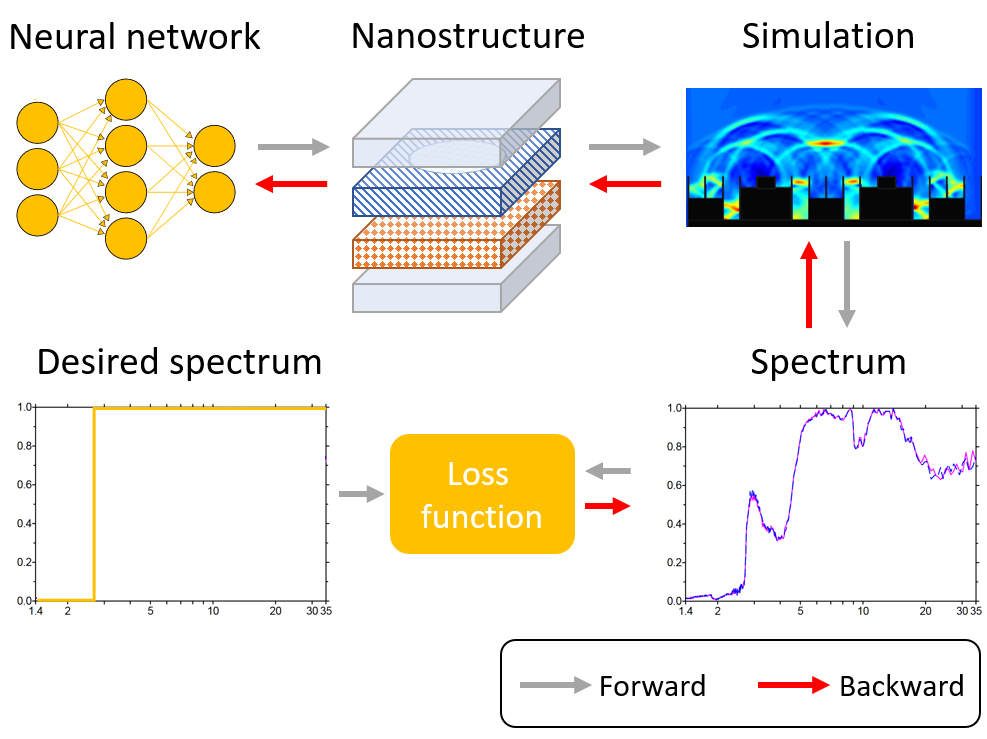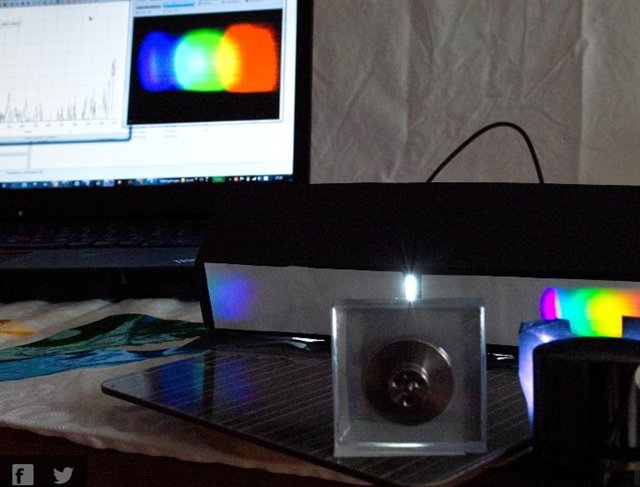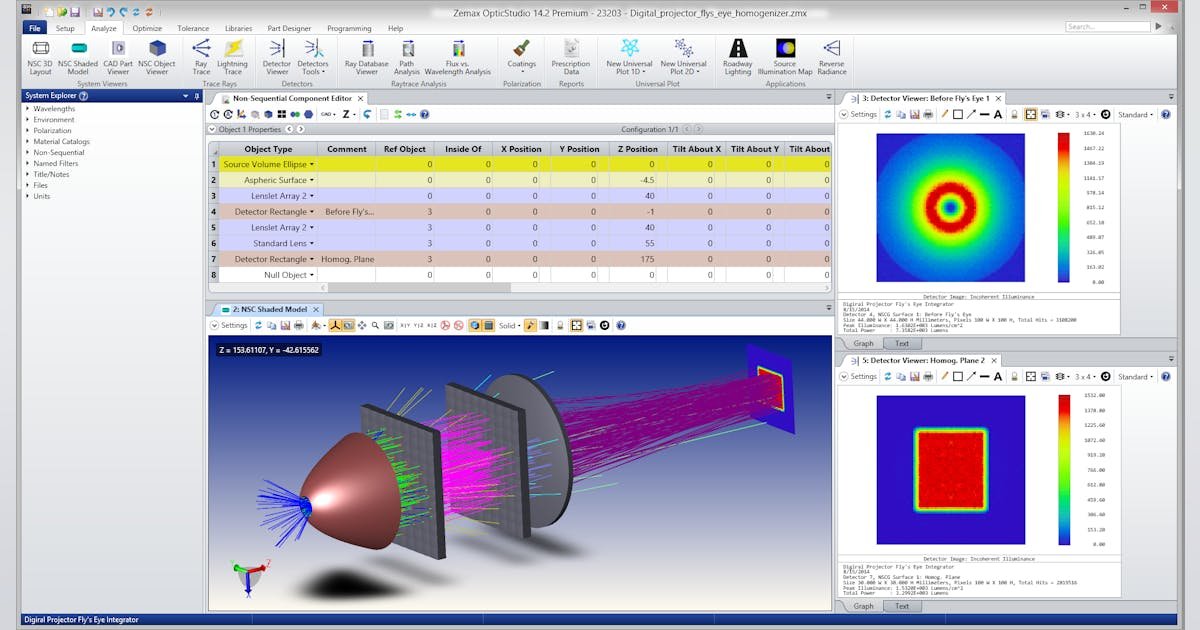Compound Photonics has launched the world’s smallest wide field of view 1080p optical engine reference design specifically for smart glasses. This new design, named “Epson FC-70”, leverages Compound Photonics’ NOVAN+ display driver and CP2043 optics. The company highlights the engine’s compact size as a key feature, alongside its low power consumption and high resolution, making it ideal for augmented reality (AR) and mixed reality (MR) smart glasses applications. Compound Photonics aims to accelerate the development of consumer-grade AR glasses by providing this reference design to manufacturers. The new optical engine will be showcased at the upcoming Photonics West event.
Category: Blog
Your blog category
-

Software Achieves Blur-Free Vision for Optical Systems
Soon after the Hubble Space Telescope was launched in 1990, astronomers were faced with a significant issue: the images it transmitted back to Earth were disappointingly blurry. Teams of engineers and scientists from NASA, industry, and academia worked to diagnose the problem, discovering that the primary mirror was improperly shaped, causing incorrect light focusing.
A rescue mission was launched, and in 1993, astronauts aboard the space shuttle Endeavor replaced two of Hubble’s cameras with new optical systems designed to correct the mirror’s flaw. The result was a dramatic improvement in image clarity, with one of the new cameras becoming a highly productive astronomical instrument for decades.
What began as a major setback for NASA spurred a significant wave of research in optics. To avoid similar costly and time-consuming fixes for future telescopes, researchers are now focusing on real-time blur measurement and analysis using image data itself.
At the Jet Propulsion Laboratory (JPL) at Caltech, under NASA contract, a team has developed software designed to correct various types of image blur, including the kind that plagued early Hubble images. The software leverages flexible mirrors in future telescopes, enabling remote adjustments to compensate for image deficiencies. This eliminates the need for physical intervention by astronauts. The innovative approach uses the telescope’s existing camera as its own error sensor, avoiding the need for separate devices.
This software has enhanced the capabilities of telescopes for deep space observation and has potential applications in vision science. It’s believed this technology could improve human vision beyond the standard 20/20 acuity, potentially enabling “superhuman” vision.
Imperfect vision in humans is caused by wavefront aberrations, distortions in the light waves entering the eye. These distortions prevent light from converging perfectly on the retina, resulting in blurry images. Telescopes face similar issues.
Just as corrective optics were created for Hubble and laser surgery corrects vision, flexible lenses and mirrors in modern telescopes can be adjusted in real-time. Current and next-generation telescopes utilize deformable mirrors – thin, adjustable surfaces controlled by actuators. These mirrors morph to counteract wavefront errors, sharpening images and even removing atmospheric “twinkle” for ground-based telescopes.
The foundation of wavefront sensing dates back to 1904 with astrophysicist Johannes Hartmann’s screen technique. Later, in the 1960s, Roland Shack developed the Shack-Hartmann sensor, replacing Hartmann’s screen with lenslets for more efficient light capture, which became crucial for satellite imaging.
Versions of the Shack-Hartmann sensor are used in adaptive optics systems of many advanced telescopes. In 2007, astronomers at Palomar Observatory used an adaptive optics system, incorporating a Shack-Hartmann sensor and deformable mirror to achieve images of the M13 globular cluster with twice the resolution of Hubble, showcasing the power of ground-based observatories when equipped with such technology.
However, the Shack-Hartmann sensor has hardware limitations. A new approach focuses on measuring error directly at the camera, eliminating extra hardware. This software-based method, based on “phase retrieval,” processes images to decode wavefront errors, adapting algorithms initially developed for electron microscopy in the 1970s.
The software analyzes images taken at different focus settings, refining its estimate of wavefront error through iterative loops. A key innovation at JPL has been improving the optical system model within the software itself, overcoming limitations when wavefront errors are large. This adaptive model also accounts for factors like telescope movement or focus changes during image capture, leading to more accurate error correction. The software, a modified Gerchberg-Saxton algorithm, has demonstrated accuracy to within 2 billionths of a human hair in wavefront sensing.
This software can be used with various optical hardware, adjusting movable lenses or deformable mirrors to optimize image focus. It is currently used at Palomar Observatory and is being explored for applications such as exoplanet detection, where altering wavefronts can redistribute starlight to reveal faint orbiting companions.
Beyond real-time correction, the software can also enhance existing blurry images. By estimating the “point-spread function,” it can apply advanced image-processing techniques to achieve “superresolution,” recovering image data lost due to optical imperfections. This was demonstrated successfully with images from NASA’s Deep Impact mission, bringing an out-of-focus image of Earth’s moon into sharp clarity.
The next generation of space telescopes, including the James Webb Space Telescope, will benefit significantly from this software for on-orbit wavefront error correction, especially for telescopes with segmented, deployable mirrors. The software has already been recognized with NASA’s Software of the Year Award in 2007 for its contribution to space programs.
Beyond visible light, the algorithm’s principles are applicable across the electromagnetic spectrum, potentially benefiting systems like the Deep Space Network. Unexpectedly, heat can also play a role in blur correction. By strategically using heaters on spacecraft instruments, the optics can be adjusted to counteract wavefront errors induced by temperature changes or mechanical strain.
Looking ahead, the software could revolutionize vision correction. While current eyeglasses and LASIK address basic vision errors, the technology could correct for more subtle wavefront distortions, potentially unlocking “superhuman vision.” Researchers are working to accelerate the software’s processing speed, with advancements in graphics processing allowing for near real-time wavefront error correction. The ultimate goal is real-time astronomical image correction and unprecedented visual clarity, continuing the legacy of Hubble and transforming initial setbacks into breakthroughs across the electromagnetic spectrum.
-

"Highly Efficient Meta-Lens Eliminates Color Distortion"
Researchers have detailed the operational framework for meta-lens technology, focusing on the intricate design and optimization processes employed in their development. The methodology utilizes sophisticated computer simulations to model and refine lens structures. These simulations incorporate mathematical equations that define the boundaries and govern the electromagnetic behavior of light as it interacts with the lens. The design process involves iteratively adjusting material properties within the lens, often using materials like titanium dioxide and air, to achieve a desired focal point and numerical aperture. This optimization is achieved through algorithms that analyze and enhance the lens’s performance, ensuring it meets specific optical objectives. The researchers utilize techniques like finite element methods to discretize the models and Kreisselmeier–Steinhauser objective functions to target specific optical characteristics across a range of wavelengths. This approach offers a comprehensive and adaptable strategy for creating meta-lenses tailored for various advanced optical applications.
-

Advanced Software Streamlines Thin-Film Optical Design Workflow for Fabrication
Advanced software helps designers create thin-film coatings with precise spectral qualities for almost any design challenge. However, these computer-generated designs are not always easily manufactured with current coating equipment and monitoring techniques.
To address this, software developers are creating algorithms that automatically produce practical design solutions and specialized tools for particular design problems. These advancements aim to ensure designs can be fabricated while maintaining excellent spectral performance. Research at OptiLayer Software focuses on developing design methods suitable for specific monitoring and deposition processes.
Experienced engineers often rely on their own methods to simplify filter designs, especially for broadband blocking filters. Near-quarter-wave stacks are favored for manufacturing simplicity in short-pass, long-pass and Fabry-Perot filters. These designs benefit fabrication systems limited in depositing very thin layers and allow optical monitoring without wavelength changes. OptiLayer has developed a Sensitivity-Directed Refinement (SDR) algorithm that rapidly generates near-quarter-wave designs.
The SDR algorithm refines an initial quarter-wave stack design by selectively adjusting layer thicknesses based on sensitivity analysis. An automated version of this SDR algorithm allows for multiple design solutions by varying parameters such as the number of adjusted layers. For example, an SDR-designed blocking filter using Schott B270 glass, tantalum pentoxide, and silicon dioxide, achieved targeted transmittance levels across different spectral ranges while maintaining a near-quarter-wave structure.
Metal-dielectric composites are gaining interest due to their unique optical properties arising from surface-plasmon resonance. These composites, readily fabricated with standard equipment, allow for sophisticated spectral performance beyond traditional dielectric coatings. Unlike dielectrics, the optical properties of metal layers in these composites are influenced by both layer thickness and surrounding materials. Therefore, conventional coating design methods based on thickness variations alone may not be suitable.
OptiLayer suggests a design approach using a fixed-thickness metal-dielectric “sandwich” as a starting point. Gradual evolution techniques, adding layers near the substrate or environment while keeping the sandwich core fixed, can be applied. Constrained optimization can further refine the design. For instance, coatings exhibiting different reflected colors from the front and back surfaces, while maintaining over 50% transmittance, were designed. A SiO2/Ag/SiO2 sandwich structure was used to achieve orange front and violet back reflection. Similar color-shifting designs using gold have been successfully produced by researchers at the Institut Ruđer Boskovic.
-

Option 1 (Focus on Key Innovation):
Inverse Design Improves Nanotech Solar Reflectors Optics
Option 2 (Slightly more broadly accessible):
Inverse Design Breakthrough for Nanostructured Solar Reflectors
Option 3 (Emphasize the advancement):
Inverse Design Advances Nanostructured Optical Solar Reflectors
Option 4 (Concise and direct):
Nanostructured Solar Reflectors Optimized by Inverse Design
Spacecraft utilize optical solar reflectors on their exterior surfaces to regulate temperature in space. These reflectors serve a critical dual purpose: deflecting incoming sunlight and emitting infrared radiation, effectively managing heat from both solar exposure and onboard equipment. For many years, quartz tiles coated with metal have been the standard for these reflectors. However, these traditional designs are heavy, expensive, and prone to damage. Flexible polymer alternatives exist but lack the performance and durability of quartz. To overcome these limitations, scientists are innovating with new materials and designs for reflectors. These include metamaterials, which are engineered to have special optical properties, and thermochromic materials that adjust heat emission based on temperature. To speed up the development process, researchers are employing machine learning techniques, specifically a method called inverse design. This involves using neural networks to determine the ideal material properties for optimal reflector performance, a more efficient approach compared to traditional trial-and-error methods. The aim is to create high-performance reflectors with wider design possibilities for future spacecraft. Currently, this research is ongoing, with initial findings being analyzed. Scientists are also exploring potential applications of this technology beyond reflectors, including advanced solar sails for spacecraft propulsion. In the interest of open research, all data and code from this project will be made publicly accessible.
-

Spekwin32 Software Receives Major Update for Optical Spectroscopy
Spectroscopy Ninja has launched a Kickstarter campaign to secure funding for significant upgrades to Spekwin32, their widely used spectrometry software. Developed by Friedrich Menges, Spekwin32 originated from software created during his Masters thesis work at the Universitat Konstanz in 1998. Menges enhanced the initial program, Spekwin, into a 32-bit application which became essential within his research group for spectral data processing. Since 2001, Spekwin32 has been available free of charge for academic and personal use.
The current Kickstarter campaign aims to finance a comprehensive modernization of Spekwin32, including an upgrade to 64-bit architecture, support for multiple plot windows, expanded file format compatibility, enhanced interactivity and general improvements. Successful funding would allow Menges to dedicate three months to full-time development of these updates.
Spekwin32 was designed to operate independently of specific spectrometers, manage multiple spectra, facilitate simultaneous analysis and visualization, and serve as a practical tool for users. Inspired by its speed, efficiency, versatility, reliability, and user-friendliness, Menges embraced the “Spectroscopy Ninja” identity when .ninja domains became available in 2014. He outlines the core principles of efficient software utilization on his website as “The Way of the Spectroscopy Ninja”.
Spekwin32 boasts a global user base exceeding 10,000, with approximately 5,000 new downloads annually. The software is primarily utilized in academia, but also by over seventy companies including Canon, Philip Morris International, and Bosch. Menges provides individual support to around 400 users each year. Spekwin32 is referenced in over 110 scientific publications and supports 35 file formats. Extensive documentation is available through an online manual. Menges highlights the United Nations / Organisation for the Prohibition of Chemical Weapons’ decade-long employment of Spekwin32 in infrared spectra analysis as a key achievement.
Demonstrating versatility, Menges recently showcased Spekwin32’s compatibility with do-it-yourself spectrometers through a Hackaday project. The software addresses common challenges in data utilization related to file compatibility and software functionality. Menges’ dedication to this project, balancing personal passion with the creation of a globally valuable tool, is evident. The Kickstarter campaign to fund the modernization efforts is currently underway.
-

Software Speeds Biomedical Optics Development, Accelerating Innovation
Optical device design is undergoing a significant transformation thanks to advanced software tools. Historically, engineers relied on manual calculations and physical prototyping, a process that was time-consuming, resource-intensive, and often yielded imperfect results. Today, optical design software is streamlining the process, offering faster and more precise calculations along with the ability to simulate designs prior to physical creation. This shift is particularly impactful in biomedical optics, where the complexity of systems demands accuracy and efficiency.
Designers in the field now have access to a range of software options from companies like Breault Research Organization and Synopsys. To understand the impact of these tools, BioOptics World spoke with experts including Professor José Sasián from the University of Arizona, developer Paul Lutus of the open-source platform OpticalRayTracer, and representatives from commercial software providers such as Lambda Research (TracePro), Photon Engineering (FRED Optical Engineering Software), and Zemax (OpticStudio).
Professor Sasián emphasizes the growing importance of software proficiency in optics. He notes that graduates entering the field will find themselves in collaborative environments where optical design and analysis software are essential tools. While these programs offer visually appealing graphics, he stresses that truly leveraging their potential requires dedicated learning and a strong foundation in optics and lens design principles.
Rich Pfisterer of Photon Engineering describes their FRED software as a virtual prototyping tool. He points out that the traditional hardware development process can be costly and uncertain. FRED allows for rapid and accurate software simulations, making it a valuable and cost-effective solution for biomedical applications development across various devices like endoscopes, microscopes, cameras, and zoom lenses. The software functions as a 3D computer-aided design platform specifically for light propagation analysis within complex geometries.
Akash Arora, product manager at Zemax, highlights the versatility of OpticStudio, stating it can be used for nearly any application involving optics, from contact lenses and retinal research to laser systems across diverse industries. Pfisterer adds that users can build intricate models using basic shapes or import CAD files, and define complex light sources and optical properties like coatings and scattering effects. This enables simulations of phenomena like light scattering in skin, fluorescence in biological samples, or thermal emission from tissue, and supports sophisticated modeling of systems such as optical coherence tomography (OCT) and flow cytometry.
According to Arora, the primary function of these software tools is to simulate optical systems, minimizing the need for physical prototypes during the initial design phase. Once a design is finalized in OpticStudio, the software generates detailed schematics and drawings specifying dimensions and tolerances necessary for manufacturing. This data can also be converted into CAD formats compatible with CNC machines, directly facilitating the production of optical components. However, Arora underscores that a strong understanding of optics principles, including ray tracing, significantly enhances a user’s ability to effectively utilize the software.
Software performance is also tied to hardware capabilities. While OpticStudio can run on standard computers, enhanced processing power, particularly with multi-core processors, directly translates to faster simulation times, offering a linear speed improvement with increased cores.
Lambda Research’s TracePro, as explained by Mike Gauvin, vice president of sales and marketing, is known for its visual interface and ease of use. The software allows users to quickly sketch optical elements and interactively trace rays to visualize light behavior in 2D or 3D. TracePro also offers optimization tools, with Gauvin citing examples where minor design adjustments made using these tools significantly improved lens performance. Lambda Research provides training courses to assist users in maximizing TracePro’s potential, covering topics from geometry input and optical property assignment to advanced optimization and stray light analysis. These training programs cater to a wide range of professionals, from CAD designers to experienced optical engineers, and similar training is available for other software packages as well.
Finally, Paul Lutus, creator of the free, open-source OpticalRayTracer, developed the software initially to meet his own needs from his background in NASA, including work on the space shuttle and Viking Mars mission. He notes that OpticalRayTracer has gained academic interest as an educational tool due to its accessibility and no-cost nature.
-

Deep Design Breakthrough Revolutionizes Development of Optical Devices
In our increasingly interconnected and data-rich world, artificial intelligence (AI) is rapidly expanding its reach into numerous aspects of life. Fueled by advancements in computer hardware and the abundance of digital information, deep learning, an AI technology inspired by the functioning of the brain, is being applied across diverse fields. These range from machine vision and natural-language processing to image recognition and even game playing. These varied applications depend on the ability of deep learning to identify and generalize patterns from massive datasets. Pictured is David Sell, a former student of Jonathan Fan from Stanford University, working on an experiment characterizing freeform surfaces, similar to those designed by the Fan group using deep learning.
-

Optical Design Software: Driving Photonic Innovation Forward
Simulation software is helping researchers and engineers to optimize laser use across various applications. SimphoSOFT, developed by Simphotek, is enabling users to effectively match lasers to specific application needs through simulation. This software analyzes rate equations for two-photon scanning spectrometry, allowing comparison of different lasers in how well they excite fluorescing dyes and proteins. Simulations using SimphoSOFT have shown that fixed-wavelength femtosecond fiber lasers can achieve comparable photon counts and image quality to more expensive tunable Ti:sapphire lasers in certain applications.
Lawrence Livermore National Laboratory is utilizing COMSOL simulation to study and mitigate optical damage in high-power laser systems like the National Ignition Facility. With NIF’s powerful pulses approaching damage thresholds, simulation plays a crucial role in reducing damage risks and aiding in the repair and recycling of damaged optics. A key finding from Livermore’s simulations involves understanding mass transfer on laser-heated glass surfaces. Their research indicates that using microsecond pulses can selectively evaporate surface material without causing fractures, unlike shorter nanosecond pulses. This technique holds potential for applications like selective laser melting in 3D printing.
The evolution of optical design software has been significantly influenced by advancements like cell-phone cameras. The demand for miniaturized lenses with high performance for cell phones has driven software development. While modern software can optimize designs, expert knowledge remains crucial for selecting appropriate starting points for optimization and balancing performance with factors like cost and manufacturability, especially with constraints such as size limitations in cell phone cameras.
Another challenge for optical design software comes from the rise of LED illumination. Issues like glare from some LED streetlights highlight the complexities of non-imaging optical design. General-purpose software like COMSOL Multiphysics is being used to explore the capabilities in photonics, allowing simultaneous modeling of factors such as thermal expansion, mechanical strength, and optical gain across arrays of unit cells. Despite the power of these complex software tools, the importance of careful data input and modeling techniques remains paramount to avoid issues of inaccurate outputs. Good software is now essential for lasers and photonics, and further advancements are needed to fully utilize emerging technologies like optical metamaterials and integrated photonics.
-

Vuzix: Next-Gen Smart Glasses to Debut at CES 2025
Rochester, N.Y., Nov. 26, 2024 – Vuzix Corporation, a supplier of smart glasses and Augmented Reality technology, will display its latest waveguides and smart glasses designs at CES 2025 in Las Vegas from January 7-10, 2025.
The company will showcase new full-color 1.0mm and super-slim 0.7mm thin waveguides. These will be demonstrated with various display engines, including µLEDs and LCoS projectors. Vuzix will also present new OEM Ultralite smart glasses reference platforms, including a full-color binocular model featuring microphones, speakers, and a built-in camera. Visitors to CES will be able to experience Vuzix’s existing product range as well.
Further details about the product demonstrations will be released closer to the event.
Paul Travers, President and CEO of Vuzix, stated that the adoption of smart glasses is beginning, driven by AI and support from major consumer and software companies. He believes Vuzix’s waveguides and designs are central to this market development and anticipates 2025 will be a significant year for the industry. Vuzix is focused on producing high-volume, low-cost waveguides and related technologies.
Vuzix Corporation designs, manufactures, and markets AI-driven Smart Glasses and AR technologies for enterprise, medical, defense, and consumer sectors. Their offerings include head-mounted displays, wearable computing devices, and OEM waveguide optics. The company holds over 400 patents and has received numerous innovation awards. Vuzix was founded in 1997 and is publicly traded on NASDAQ as VUZI.